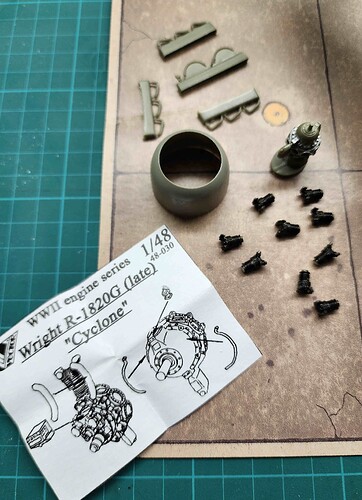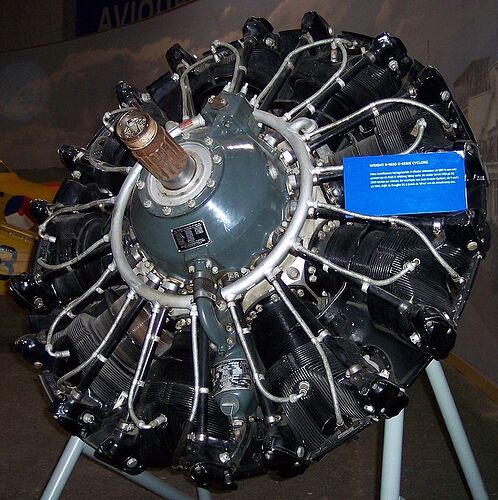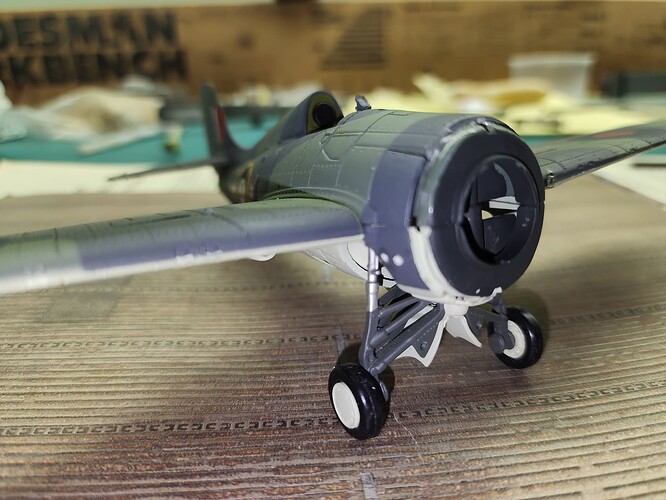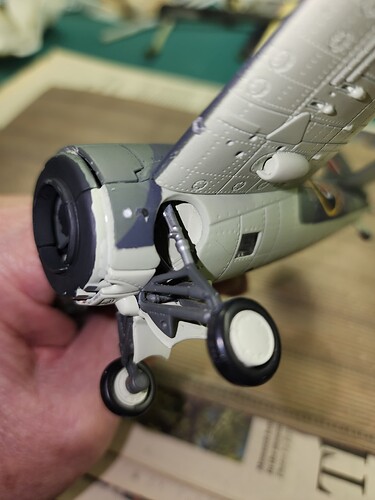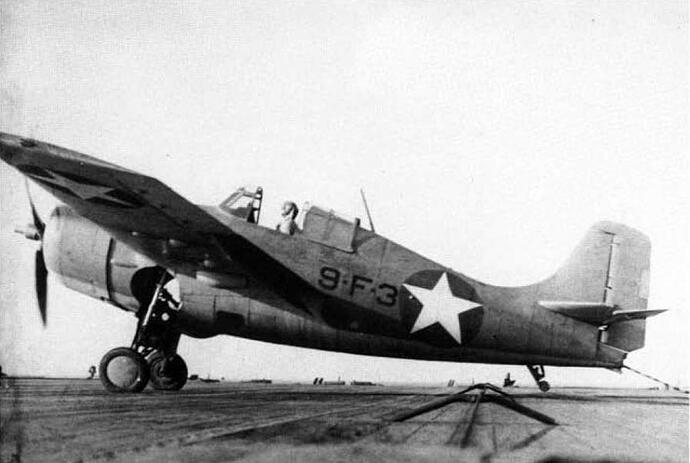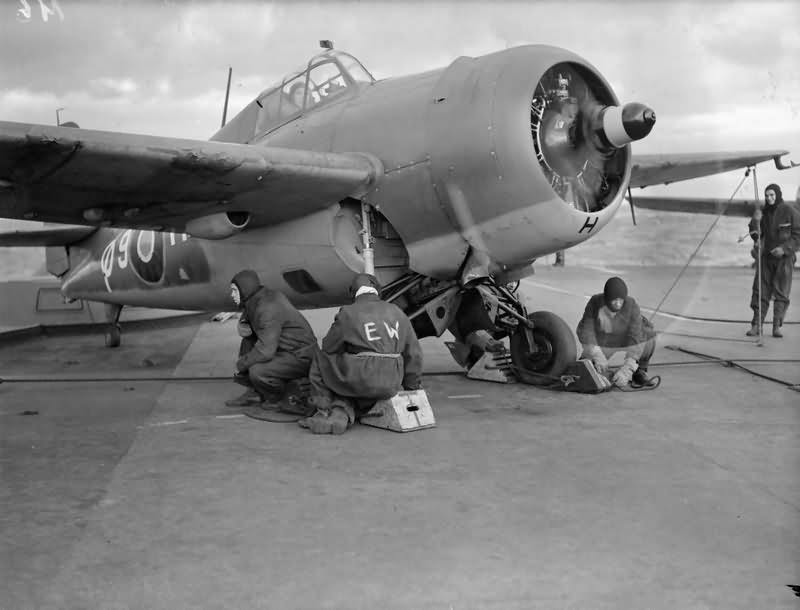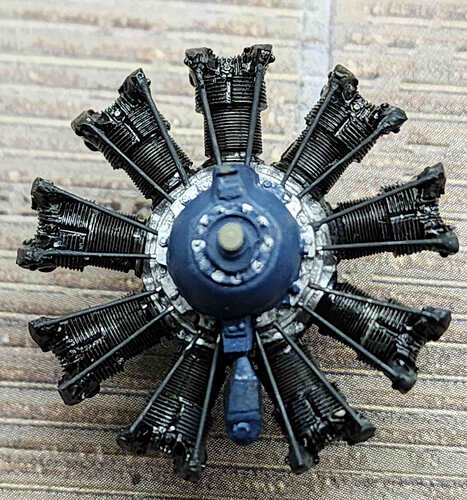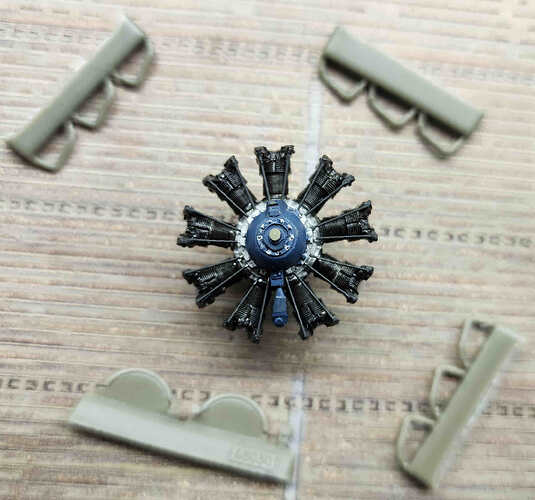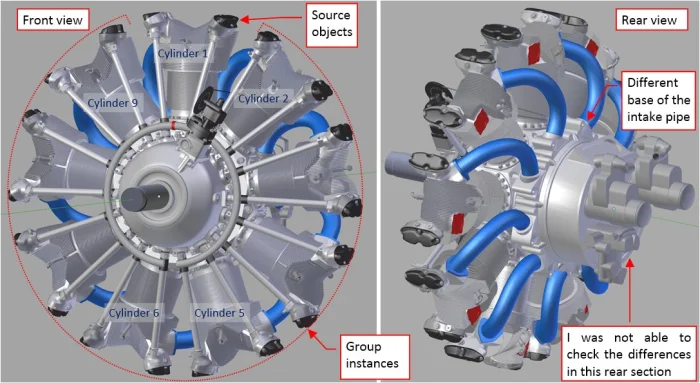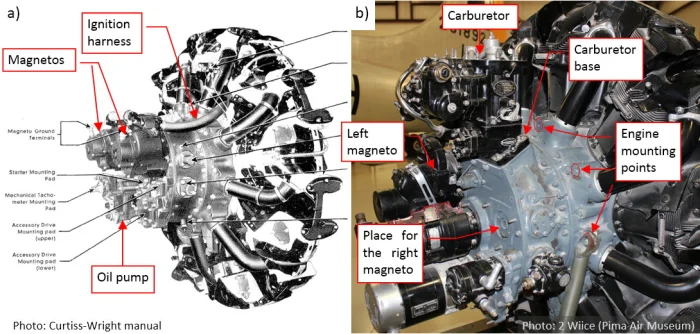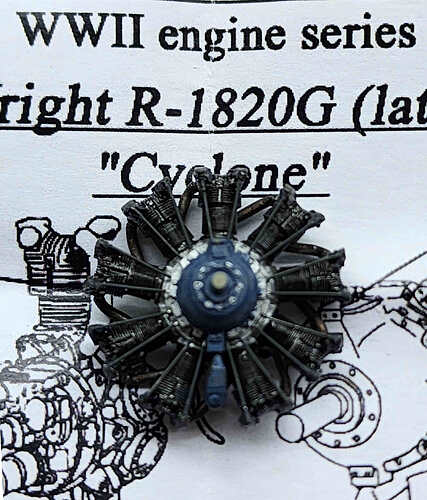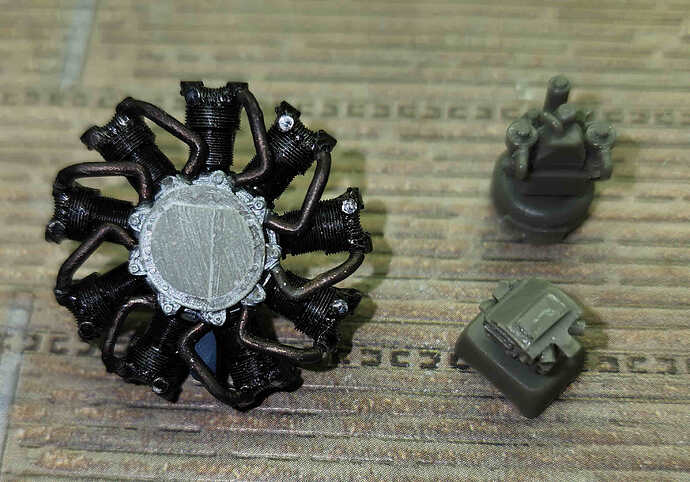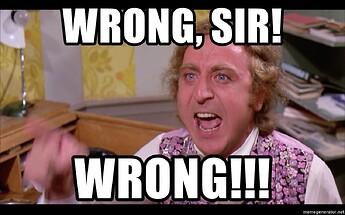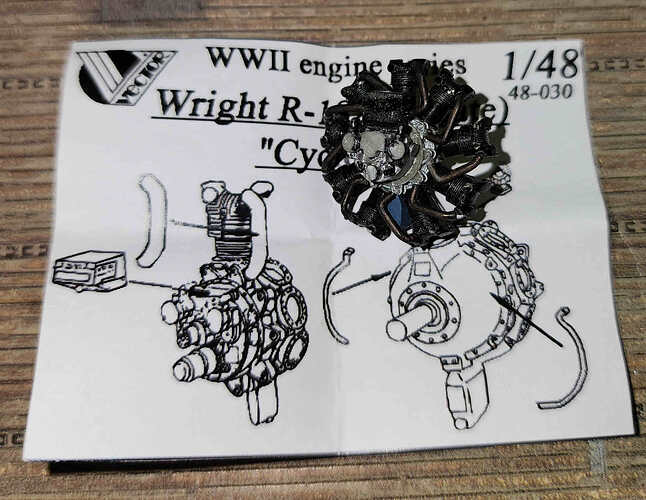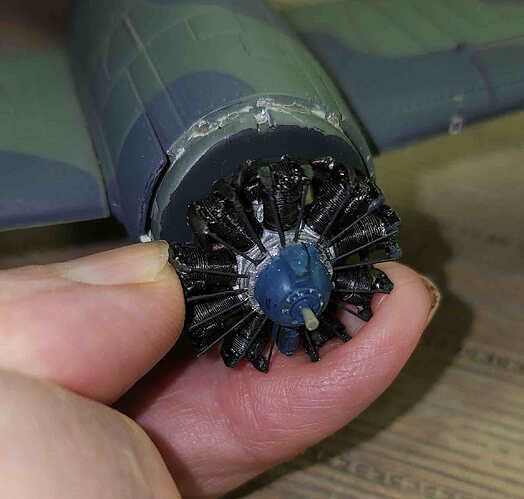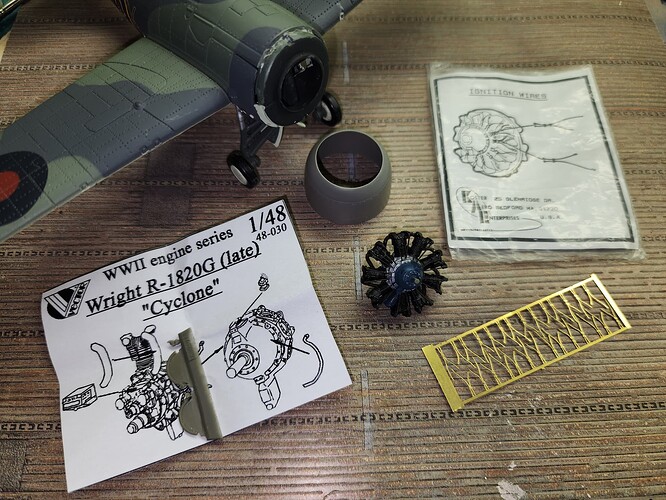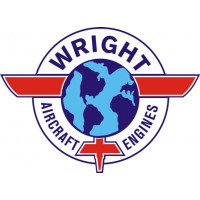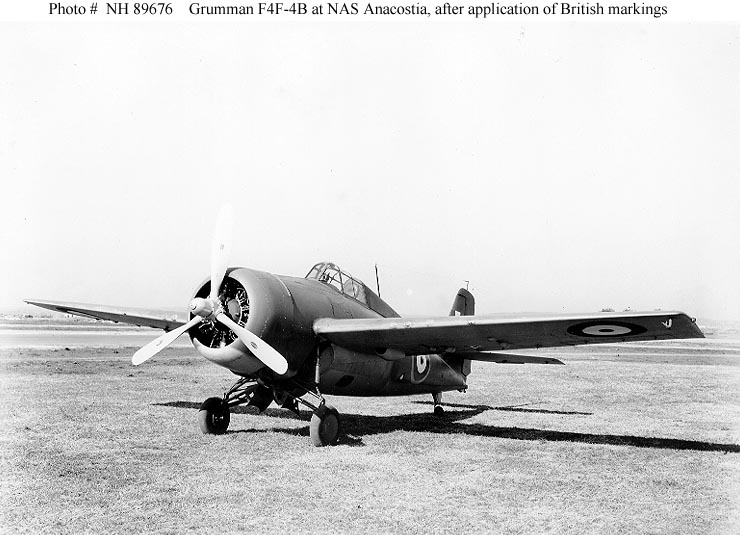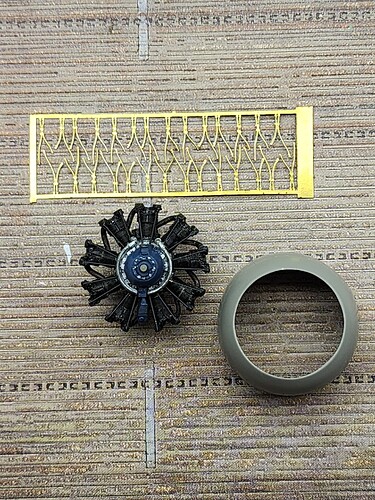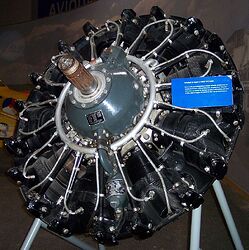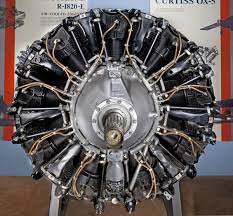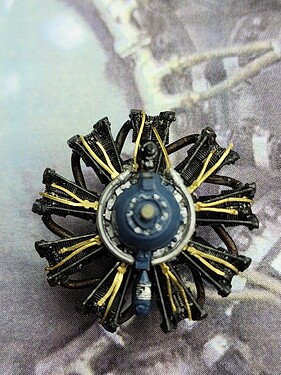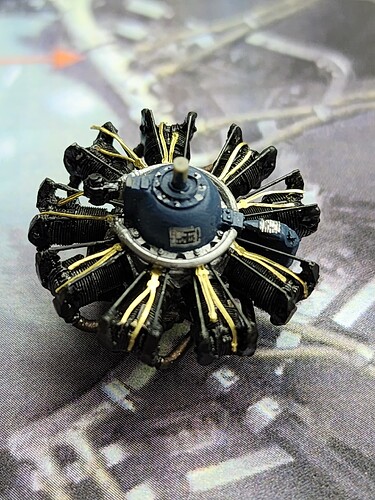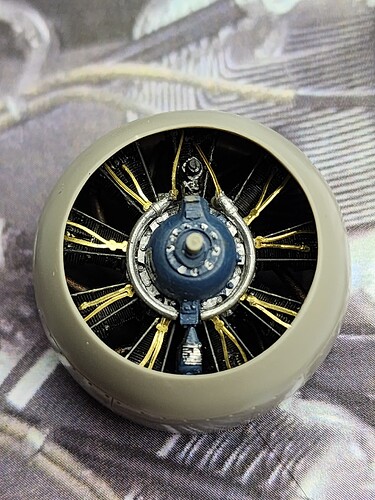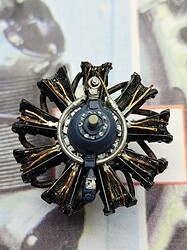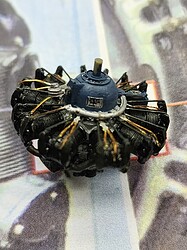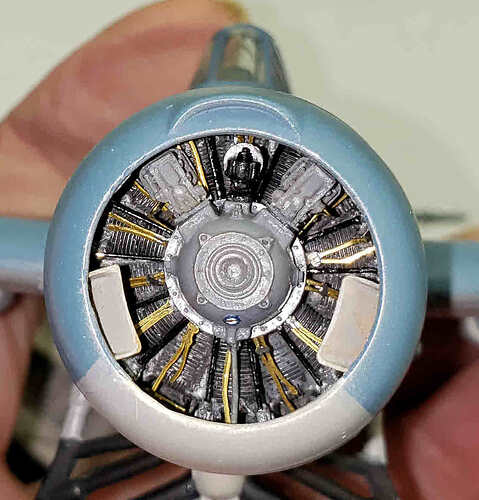Git Yer Motor Runnin’
Extra points if you know the source of this lyric line without clicking the link, and I dub thee an old knight, Sir, if you saw the flick in a movie theatre like I did when it first came out. But I digress, and move to my motor – actually a misnomer, as I believe “motors” are run by electricity, and I mean a miniature R-1820.
I’ll spare you even more graphic images that magnify the imperfections with horrifying megapixel images invisible to the naked eye. The point is I put some paint on the gearbox (USN intermediate blue to kinda match the color on the reference museum photo) and I glued on the cylinders. I also had to shave down the rocker boxes so it would fit inside the cowling. (If memory serves, H.G. also had to do that with the Dutch H-75A7, as did I with my resin CW-21B.)
I’ll show the fit when I get everything aligned and glued in.
There is some prep painting necessary behind the cylinders at what passes for a firewall. You can see the NATO Black applied above, and this side view shows what I was covering up.
That dark and light color split, and if you are wondering what the two white bumps are on either side
(oops, one is old and black) please remember those little aerodynamic bulges on the F4F.
They weren’t on the Martlet IV.
Grumman Martlet Mk IV FN144 is warmed up on board HMS Formidable
Why? Well, the intercoolers that were part of the Wildcat R-1830 powerplant didn’t quite fit inside the wheelwell, so room had to be made for the top outboard edges.
Within reason, we want to be as accurate as possible given the limitations of the model, especially on the exterior.
Speaking of details, that photo of Martlet Mk IV FN144 above has good detail on the Hamilton Standard propeller dome. It is interesting that the bolt at the tip of the dome protudes, unlike the other Ham Standard prop domes where the bolt has a more inverted look.
Diversity is the spice of life, I guess, and on this subject I won’t say more.
More to come over the weekend, I hope.

